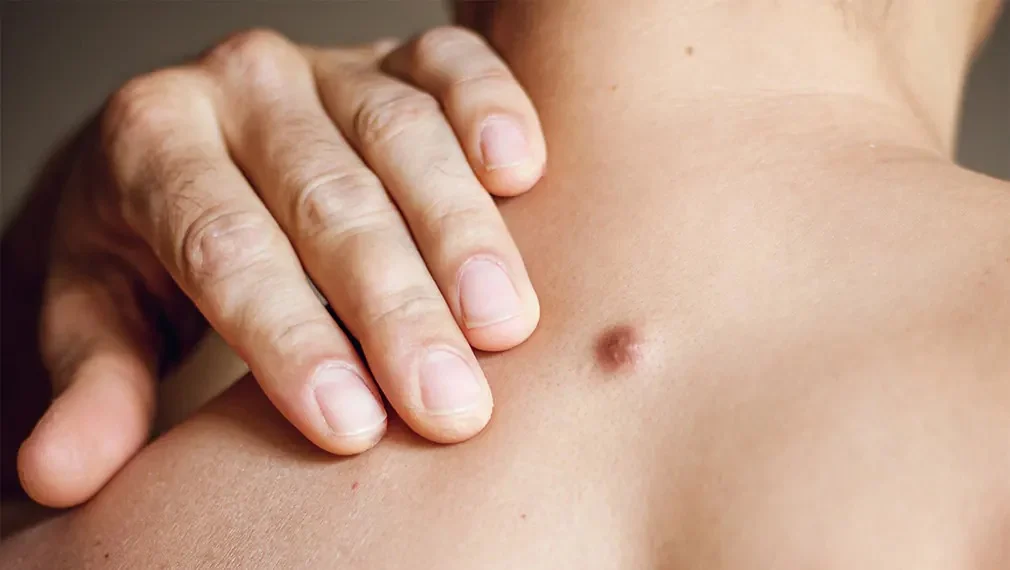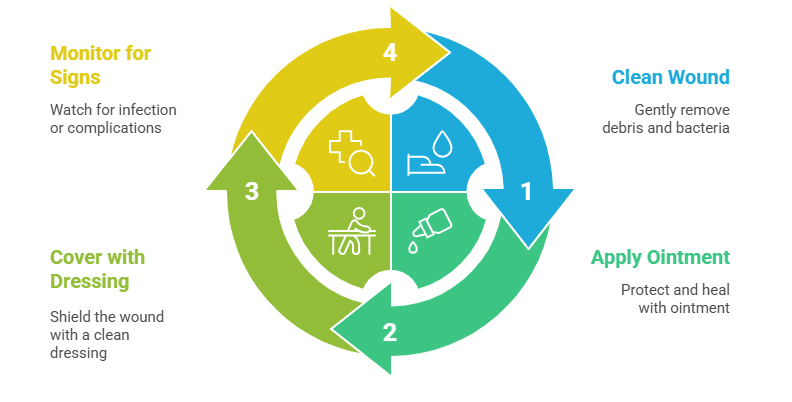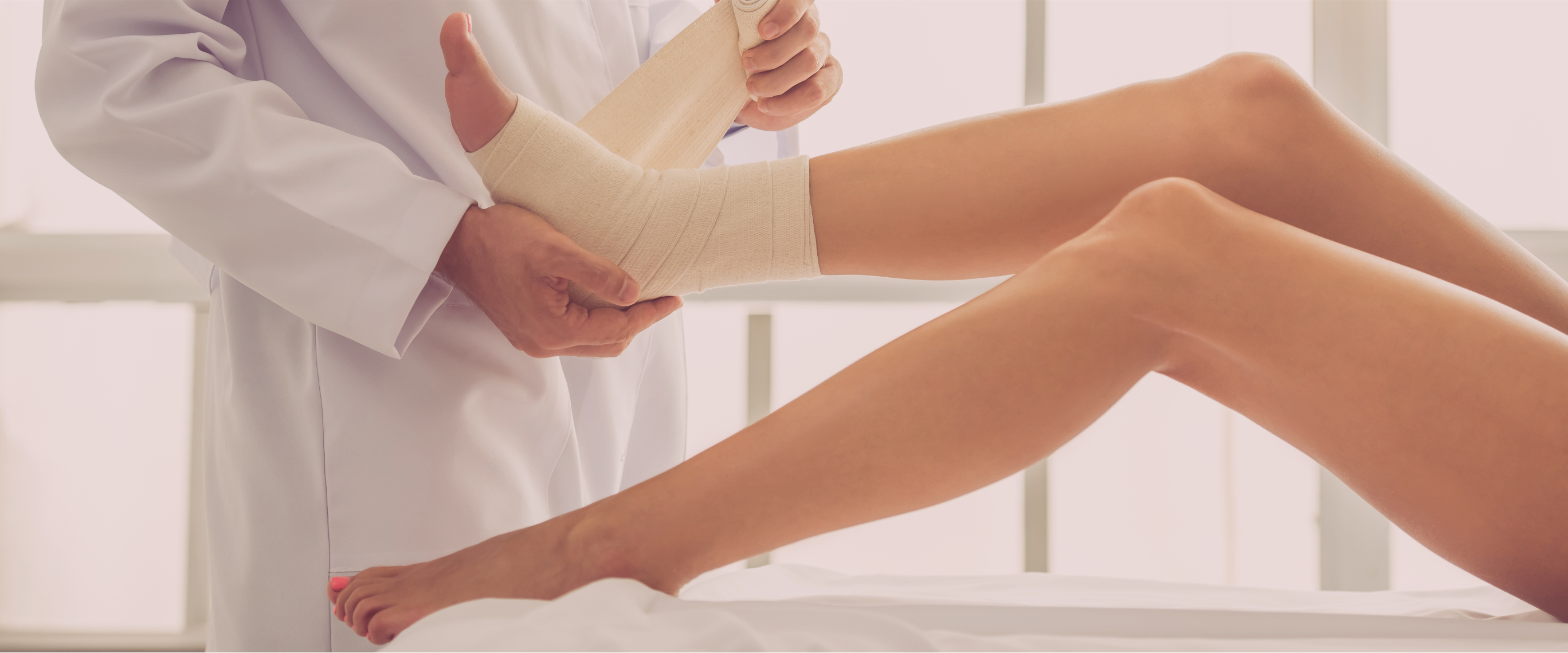
How to Treat a Sebaceous Cyst Wound at Home
How to Treat a Sebaceous Cyst Wound at Home
Table of Contents
ToggleQuick Facts About Sebaceous Cyst Wound Care
- Gentle Cleaning Prevents Infection – Wash the wound daily with mild soap and warm water to keep bacteria away and promote healing.
- Use Ointment and Dressings – Apply a thin layer of antibiotic ointment and cover with a clean, non-stick bandage for protection.
- Follow Consistent Home Care – Keep the area dry, avoid tight clothing, and change dressings regularly for faster sebaceous cyst wound healing.
- Watch for Warning Signs – Redness, swelling, discharge, or fever indicate possible infection and require medical attention.
- Healthy Habits Aid Recovery – Eat nutritious foods, stay hydrated, and rest well to support natural sebaceous cyst wound care and prevent recurrence.
When Emily noticed a small, painless bump on her upper back, she didn’t think much of it. But after a few months, the bump started growing and became sore to the touch. Her doctor later confirmed it was a sebaceous cyst, a harmless but irritating skin condition. Once it was drained, Emily was left with a small open wound that needed proper care to heal.
Like many people, Emily wanted to make sure she treated her wound safely and effectively at home. In this story, we’ll follow her recovery journey while sharing practical sebaceous cyst wound care tips, what to avoid during healing, and when to seek professional help. By the end, you’ll have a clear, easy-to-follow routine for managing a sebaceous cyst wound right at home.

The Start: Understanding a Sebaceous Cyst
When Emily’s doctor explained what a sebaceous cyst was, she learned it formed from a blocked oil gland under the skin. These cysts are common on the face, back, neck, or shoulders, and while they’re usually harmless, they can get infected or uncomfortable.
After the cyst was drained, her doctor reminded her that proper aftercare was essential. A neglected wound could quickly turn into an infection. For anyone who has undergone a similar procedure, this detailed post Sebaceous Cyst Extraction: A Guide to Post-Operative Wound Care provides helpful insights into post-surgery wound management.

Step 1: Gently Cleaning the Wound
The first day after her procedure, Emily washed her hands thoroughly before touching the wound. She used mild soap and warm water to clean around the area, no harsh antiseptics or rubbing alcohol, which can slow healing.
After cleaning, she gently patted the skin dry with a sterile gauze pad. It became clear to her that sebaceous cyst wound care is all about being gentle yet consistent.
Step 2: Protecting with Ointment and a Clean Dressing
Next, Emily applied a thin layer of antibiotic ointment to help prevent infection. Her doctor had suggested using a common over-the-counter ointment like Neosporin.
She then covered the wound with a clean, non-stick bandage. This protected it from dirt and friction throughout the day. She made sure to replace the dressing daily and whenever it became damp, allowing the wound to breathe for short periods.
This small daily ritual quickly became her routine for sebaceous cyst wound healing.
Step 3: Everyday Wound Care and Patience
Over the next few days, Emily stuck to a simple but effective care routine. She avoided long baths or swimming; instead, she took quick showers and kept the area dry afterward. She also stopped wearing tight clothing that might rub against the wound.
As she healed, she discovered a few helpful sebaceous cyst wound care tips that made a big difference:
- Eat a nutrient-rich diet: Foods with protein, zinc, and vitamin C help rebuild skin tissue.
- Stay hydrated: Water supports healthy circulation and faster healing.
- Avoid touching the area: Picking or pressing can delay healing or cause infection.
- Get plenty of rest: The body repairs itself best when well-rested.
Step 4: Watching for Warning Signs
By the fifth day, Emily’s wound started to look much better less redness and no pain. Still, she remembered what her doctor told her: to keep an eye out for any signs of infection.
She knew to seek medical attention if she noticed:
- Increasing redness or swelling
- Yellow or green discharge
- A bad odor
- A fever or chills
Luckily, her wound healed normally. But knowing the warning signs helped her feel more confident in managing her recovery.
How Long Does Sebaceous Cyst Wound Healing Take?
For Emily, the wound took about two weeks to heal completely. Smaller cysts can heal faster, sometimes within a week, while larger surgical wounds may need several weeks.
Healing time depends on wound depth, location, and how well you care for it daily. Regular cleaning, dressing changes, and gentle handling go a long way toward supporting smooth sebaceous cyst wound healing.
Step 5: Preventing Future Cysts
Once healed, Emily wanted to avoid going through the same process again. Her doctor gave her a few simple prevention tips:
- Keep your skin clean and oil-free.
- Use gentle, non-comedogenic skincare products.
- Avoid squeezing bumps under the skin.
- Exfoliate regularly to remove dead skin and unclog pores.
While sebaceous cysts can happen to anyone, these healthy habits reduce the risk of recurrence.
Conclusion:
Emily’s story ended on a positive note; her wound healed smoothly, with only a faint mark that faded over time. But she realized that not everyone’s experience is the same. Some wounds heal more slowly or become infected, even with proper care.
If your wound isn’t healing as expected or you’re unsure about what steps to take, professional help is available.
At the Center for Advanced Wound Care, our specialists offer personalized treatment plans for all types of wounds, including those from sebaceous cyst removal. If you need expert guidance or a tailored care approach, don’t hesitate to contact us.
Because, as Emily learned, healing starts at home, but the right professional support ensures it finishes strong.
Frequently Asked Questions:
1. What is the best way to care for a sebaceous cyst wound at home?
Gently clean the wound with mild soap and warm water, apply an antibiotic ointment, and cover it with a sterile bandage. Change the dressing daily and keep the area dry.
2. How long does a sebaceous cyst wound take to heal?
Most small cyst wounds heal in one to two weeks, while larger or deeper ones may take three to four weeks, depending on your body’s healing rate.
3. Can I use hydrogen peroxide or alcohol on a sebaceous cyst wound?
No. Harsh antiseptics like hydrogen peroxide or alcohol can irritate the skin and slow down the healing process. Stick to gentle cleaning with soap and water.
4. Should I pop or squeeze a sebaceous cyst at home?
Never pop or squeeze a sebaceous cyst yourself. Doing so can push bacteria deeper into the skin, leading to infection or scarring.
5. What are the signs that my sebaceous cyst wound is infected?
Infection symptoms include redness, swelling, warmth, pus discharge, foul odor, or fever. If you notice these signs, seek medical help promptly.
6. How can I speed up sebaceous cyst wound healing?
Keep the wound clean and dry, eat foods rich in protein and vitamin C, drink plenty of water, and avoid touching or irritating the area.
7. Is it normal for a sebaceous cyst wound to ooze fluid?
A small amount of clear or yellowish fluid can be normal early on, but thick, colored, or foul-smelling discharge usually indicates infection.
8. Can I shower with a sebaceous cyst wound?
Yes, short showers are fine. Just avoid soaking the wound in water and gently pat the area dry afterward.
9. Will a sebaceous cyst wound leave a scar?
Minor scarring is possible, especially if the cyst was large. Proper wound care and avoiding picking can help minimize scarring.
10. How can I prevent sebaceous cysts from coming back?
Maintain clean, oil-free skin, avoid heavy skin products, exfoliate regularly, and see a doctor for any new cysts instead of self-treating them.


